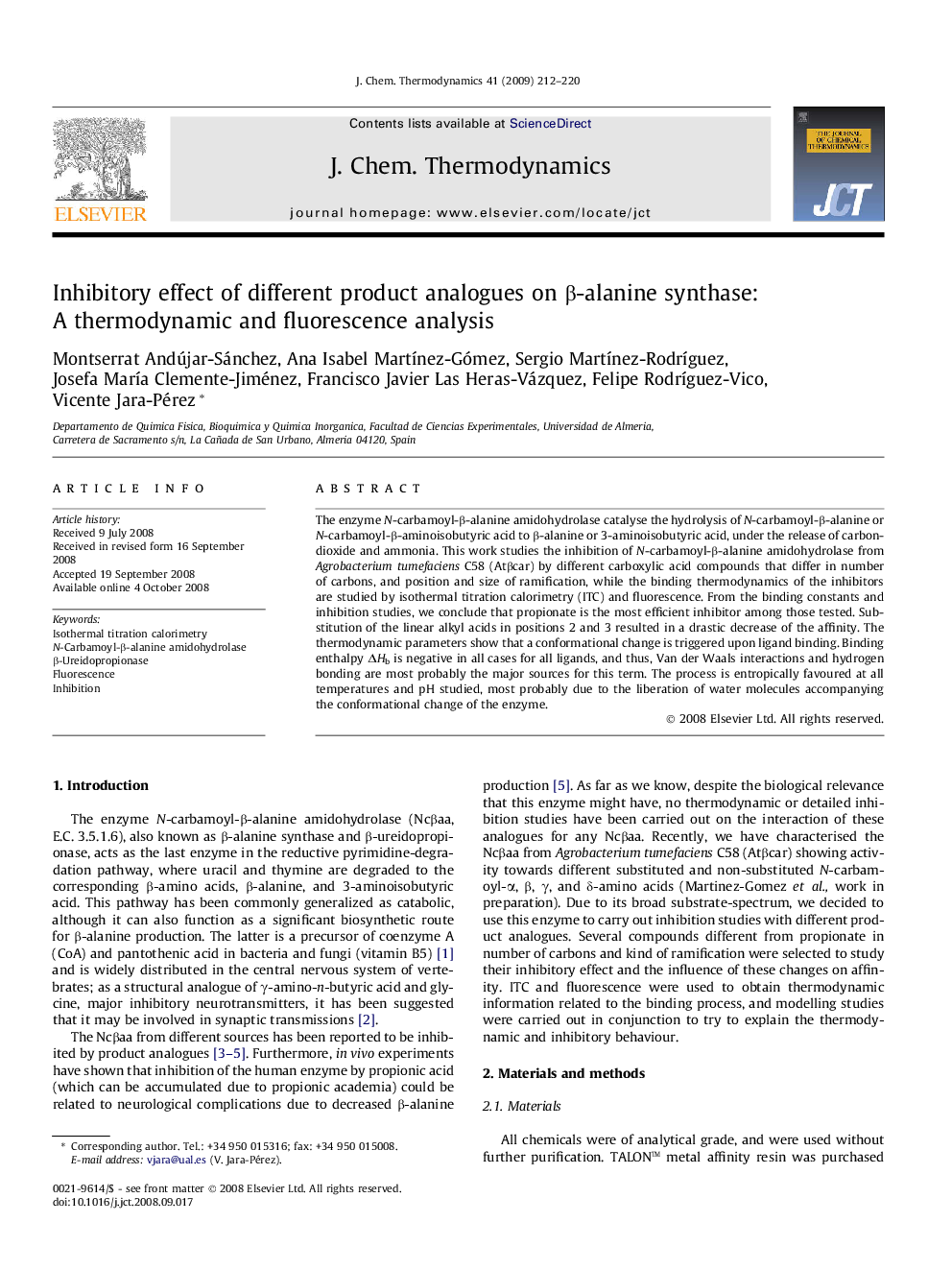| کد مقاله | کد نشریه | سال انتشار | مقاله انگلیسی | نسخه تمام متن |
|---|---|---|---|---|
| 216659 | 1426304 | 2009 | 9 صفحه PDF | دانلود رایگان |

The enzyme N-carbamoyl-β-alanine amidohydrolase catalyse the hydrolysis of N-carbamoyl-β-alanine or N-carbamoyl-β-aminoisobutyric acid to β-alanine or 3-aminoisobutyric acid, under the release of carbon-dioxide and ammonia. This work studies the inhibition of N-carbamoyl-β-alanine amidohydrolase from Agrobacterium tumefaciens C58 (Atβcar) by different carboxylic acid compounds that differ in number of carbons, and position and size of ramification, while the binding thermodynamics of the inhibitors are studied by isothermal titration calorimetry (ITC) and fluorescence. From the binding constants and inhibition studies, we conclude that propionate is the most efficient inhibitor among those tested. Substitution of the linear alkyl acids in positions 2 and 3 resulted in a drastic decrease of the affinity. The thermodynamic parameters show that a conformational change is triggered upon ligand binding. Binding enthalpy ΔHb is negative in all cases for all ligands, and thus, Van der Waals interactions and hydrogen bonding are most probably the major sources for this term. The process is entropically favoured at all temperatures and pH studied, most probably due to the liberation of water molecules accompanying the conformational change of the enzyme.
Journal: The Journal of Chemical Thermodynamics - Volume 41, Issue 2, February 2009, Pages 212–220